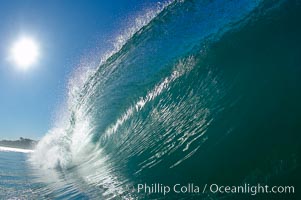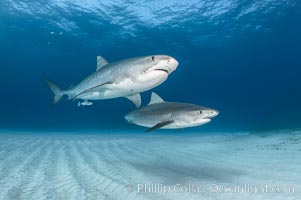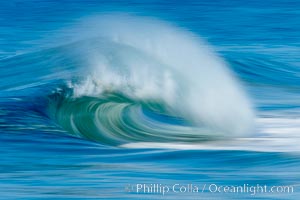
Breaking wave, fast motion and blur, The Wedge.
Location: The Wedge, Newport Beach, California
Image ID: 14355
Location: The Wedge, Newport Beach, California
Image ID: 14355
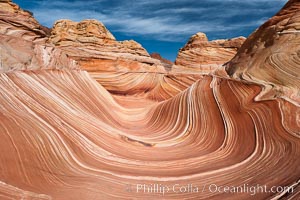
The Wave, an area of fantastic eroded sandstone featuring beautiful swirls, wild colors, countless striations, and bizarre shapes set amidst the dramatic surrounding North Coyote Buttes of Arizona and Utah. The sandstone formations of the North Coyote Buttes, including the Wave, date from the Jurassic period. Managed by the Bureau of Land Management, the Wave is located in the Paria Canyon-Vermilion Cliffs Wilderness and is accessible on foot by permit only.
Location: North Coyote Buttes, Paria Canyon-Vermilion Cliffs Wilderness, Arizona
Image ID: 20605
Location: North Coyote Buttes, Paria Canyon-Vermilion Cliffs Wilderness, Arizona
Image ID: 20605
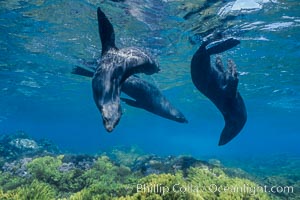
Guadalupe fur seals, floating upside down underwater over a rocky reef covered with golden kelp at Guadalupe Island.
Species: Guadalupe fur seal, Arctocephalus townsendi
Location: Guadalupe Island (Isla Guadalupe), Baja California, Mexico
Image ID: 02113
Species: Guadalupe fur seal, Arctocephalus townsendi
Location: Guadalupe Island (Isla Guadalupe), Baja California, Mexico
Image ID: 02113
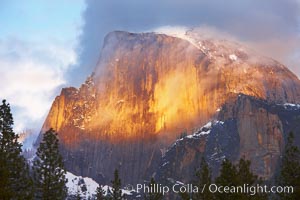
Half Dome and storm clouds at sunset, viewed from Sentinel Bridge.
Location: Half Dome, Yosemite National Park, California
Image ID: 22744
Location: Half Dome, Yosemite National Park, California
Image ID: 22744
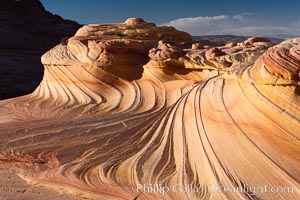
The Second Wave at Sunset, North Coyote Buttes. The Second Wave, a curiously-shaped sandstone swirl, takes on rich warm tones and dramatic shadowed textures at sunset. Set in the North Coyote Buttes of Arizona and Utah, the Second Wave is characterized by striations revealing layers of sedimentary deposits, a visible historical record depicting eons of submarine geology.
Location: North Coyote Buttes, Paria Canyon-Vermilion Cliffs Wilderness, Arizona
Image ID: 20606
Location: North Coyote Buttes, Paria Canyon-Vermilion Cliffs Wilderness, Arizona
Image ID: 20606

Panoramic photo of Crater Lake National Park.
Location: Crater Lake National Park, Oregon
Image ID: 28675
Panorama dimensions: 3271 x 10669
Location: Crater Lake National Park, Oregon
Image ID: 28675
Panorama dimensions: 3271 x 10669
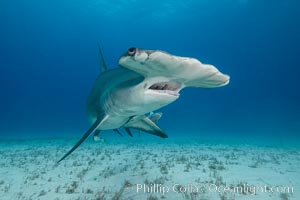
Great hammerhead shark.
Species: Great hammerhead shark, Sphyrna mokarran
Location: Bimini, Bahamas
Image ID: 31966
Species: Great hammerhead shark, Sphyrna mokarran
Location: Bimini, Bahamas
Image ID: 31966
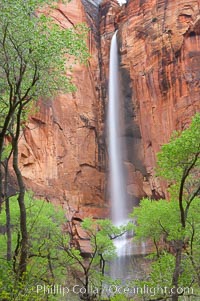
Waterfall at Temple of Sinawava during peak flow following spring rainstorm. Zion Canyon.
Location: Temple of Sinawava, Zion National Park, Utah
Image ID: 12450
Location: Temple of Sinawava, Zion National Park, Utah
Image ID: 12450
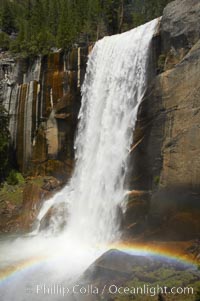
Vernal Falls at peak flow in late spring, with a rainbow appearing in the spray of the falls, viewed from the Mist Trail.
Location: Vernal Falls, Yosemite National Park, California
Image ID: 12634
Location: Vernal Falls, Yosemite National Park, California
Image ID: 12634
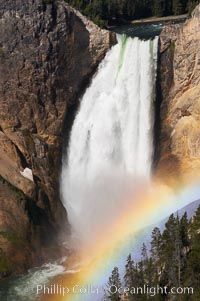
A rainbow appears in the mist of the Lower Falls of the Yellowstone River. At 308 feet, the Lower Falls of the Yellowstone River is the tallest fall in the park. This view is from Lookout Point on the North side of the Grand Canyon of the Yellowstone. When conditions are perfect in midsummer, a midmorning rainbow briefly appears in the falls.
Location: Grand Canyon of the Yellowstone, Yellowstone National Park, Wyoming
Image ID: 13319
Location: Grand Canyon of the Yellowstone, Yellowstone National Park, Wyoming
Image ID: 13319
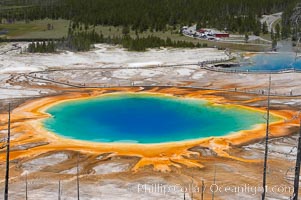
Grand Prismatic Spring (left) and Excelsior Geyser (right). Grand Prismatic Spring displays a stunning rainbow of colors created by species of thermophilac (heat-loving) bacteria that thrive in narrow temperature ranges. The blue water in the center is too hot to support any bacterial life, while the outer orange rings are the coolest water. Grand Prismatic Spring is the largest spring in the United States and the third-largest in the world. Midway Geyser Basin.
Location: Midway Geyser Basin, Yellowstone National Park, Wyoming
Image ID: 13571
Location: Midway Geyser Basin, Yellowstone National Park, Wyoming
Image ID: 13571
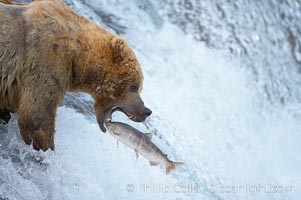
Alaskan brown bear catching a jumping salmon, Brooks Falls.
Species: Brown bear, Ursus arctos
Location: Brooks River, Katmai National Park, Alaska
Image ID: 17031
Species: Brown bear, Ursus arctos
Location: Brooks River, Katmai National Park, Alaska
Image ID: 17031
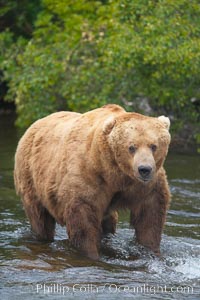
A large, old brown bear (grizzly bear) wades across Brooks River. Coastal and near-coastal brown bears in Alaska can live to 25 years of age, weigh up to 1400 lbs and stand over 9 feet tall.
Species: Brown bear, Ursus arctos
Location: Brooks River, Katmai National Park, Alaska
Image ID: 17039
Species: Brown bear, Ursus arctos
Location: Brooks River, Katmai National Park, Alaska
Image ID: 17039
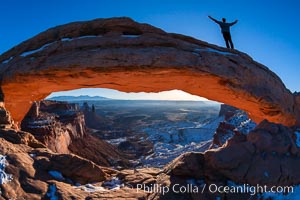
Extended High Mountain pose, Utthita Tadasana, sunrise on Mesa Arch, Utah. An exuberant hiker greets the dawning sun from atop Mesa Arch.
Location: Island in the Sky, Canyonlands National Park, Utah
Image ID: 18036
Location: Island in the Sky, Canyonlands National Park, Utah
Image ID: 18036
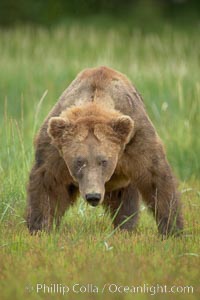
Full grown, mature male coastal brown bear boar (grizzly bear) in sedge grass meadows.
Species: Brown bear, Ursus arctos
Location: Lake Clark National Park, Alaska
Image ID: 19134
Species: Brown bear, Ursus arctos
Location: Lake Clark National Park, Alaska
Image ID: 19134
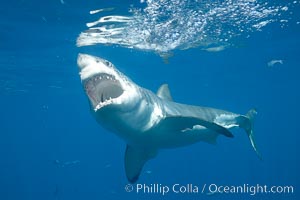
A great white shark opens it mouth just before it attacks its prey with a crippling, powerful bite. After the prey has been disabled, the shark will often wait for it to weaken from blood loss before resuming the attack. If the shark looses a tooth in the course of the bite, a replacement just behind it will move forward to take its place.
Species: Great white shark, Carcharodon carcharias
Location: Guadalupe Island (Isla Guadalupe), Baja California, Mexico
Image ID: 19452
Species: Great white shark, Carcharodon carcharias
Location: Guadalupe Island (Isla Guadalupe), Baja California, Mexico
Image ID: 19452
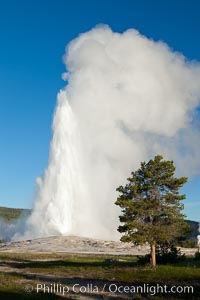
Old Faithful geyser, sunrise. Reaching up to 185' in height and lasting up to 5 minutes, Old Faithful geyser is the most famous geyser in the world and the first geyser in Yellowstone to be named.
Location: Upper Geyser Basin, Yellowstone National Park, Wyoming
Image ID: 26939
Location: Upper Geyser Basin, Yellowstone National Park, Wyoming
Image ID: 26939
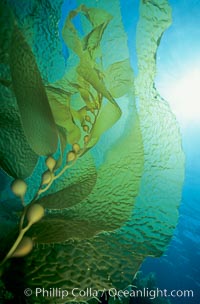
Kelp frond showing pneumatocysts.
Species: Giant kelp, Macrocystis pyrifera
Location: San Clemente Island, California
Image ID: 00627
Species: Giant kelp, Macrocystis pyrifera
Location: San Clemente Island, California
Image ID: 00627
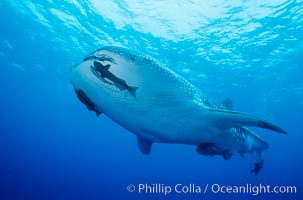
A whale shark swims through the open ocean in the Galapagos Islands. The whale shark is the largest shark on Earth, but is harmless eating plankton and small fish.
Species: Whale shark, Rhincodon typus
Location: Darwin Island, Galapagos Islands, Ecuador
Image ID: 01520
Species: Whale shark, Rhincodon typus
Location: Darwin Island, Galapagos Islands, Ecuador
Image ID: 01520
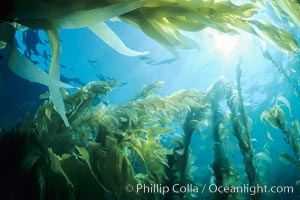
A kelp forest, with sunbeams passing through kelp fronds. Giant kelp, the fastest growing plant on Earth, reaches from the rocky bottom to the ocean's surface like a submarine forest.
Species: Giant kelp, Macrocystis pyrifera
Location: San Clemente Island, California
Image ID: 02411
Species: Giant kelp, Macrocystis pyrifera
Location: San Clemente Island, California
Image ID: 02411
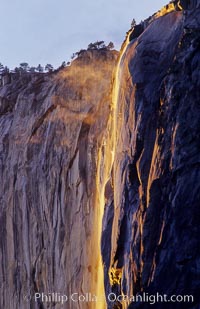
Horsetail Falls backlit by the setting sun as it cascades down the face of El Capitan, February, Yosemite Valley.
Location: Horsetail Falls, Yosemite National Park, California
Image ID: 07048
Location: Horsetail Falls, Yosemite National Park, California
Image ID: 07048
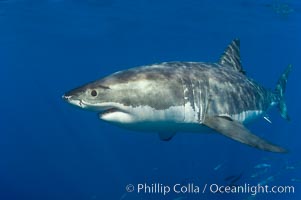
A great white shark swims through the clear waters of Isla Guadalupe, far offshore of the Pacific Coast of Baja California. Guadalupe Island is host to a concentration of large great white sharks, which visit the island to feed on pinnipeds and tuna.
Species: Great white shark, Carcharodon carcharias
Location: Guadalupe Island (Isla Guadalupe), Baja California, Mexico
Image ID: 07666
Species: Great white shark, Carcharodon carcharias
Location: Guadalupe Island (Isla Guadalupe), Baja California, Mexico
Image ID: 07666
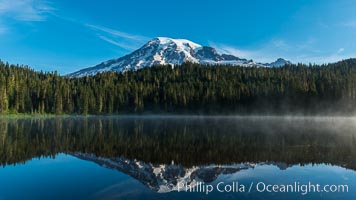
Mount Rainier is reflected in the calm waters of Reflection Lake, early morning.
Location: Reflection Lake, Mount Rainier National Park, Washington
Image ID: 28703
Location: Reflection Lake, Mount Rainier National Park, Washington
Image ID: 28703
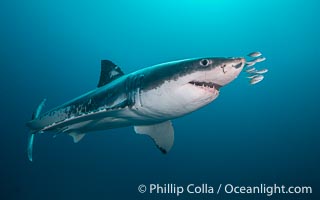
Great White Shark, South Neptune Islands, South Australia.
Species: Great white shark, Carcharodon carcharias
Location: South Neptune Islands, South Australia
Image ID: 39139
Species: Great white shark, Carcharodon carcharias
Location: South Neptune Islands, South Australia
Image ID: 39139
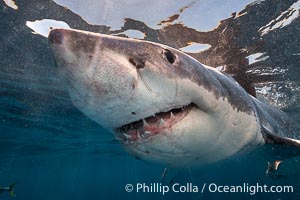
Great White Shark, South Neptune Islands, South Australia.
Species: Great white shark, Carcharodon carcharias
Location: South Neptune Islands, South Australia
Image ID: 39140
Species: Great white shark, Carcharodon carcharias
Location: South Neptune Islands, South Australia
Image ID: 39140
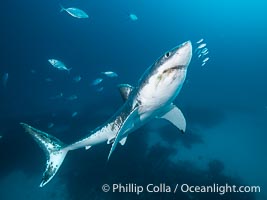
Great White Shark, South Neptune Islands, South Australia.
Species: Great white shark, Carcharodon carcharias
Location: South Neptune Islands, South Australia
Image ID: 39141
Species: Great white shark, Carcharodon carcharias
Location: South Neptune Islands, South Australia
Image ID: 39141
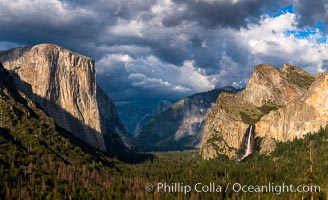
Yosemite Valley Tunnel View, Storm clouds at sunset, Yosemite National Park.
Location: Yosemite National Park, California
Image ID: 34542
Panorama dimensions: 7653 x 12541
Location: Yosemite National Park, California
Image ID: 34542
Panorama dimensions: 7653 x 12541
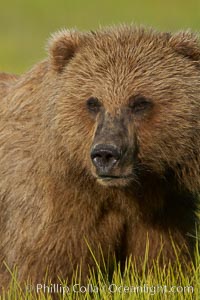
Portrait of a young brown bear, pausing while grazing in tall sedge grass. Brown bears can consume 30 lbs of sedge grass daily, waiting weeks until spawning salmon fill the rivers.
Species: Brown bear, Ursus arctos
Location: Lake Clark National Park, Alaska
Image ID: 19135
Species: Brown bear, Ursus arctos
Location: Lake Clark National Park, Alaska
Image ID: 19135
